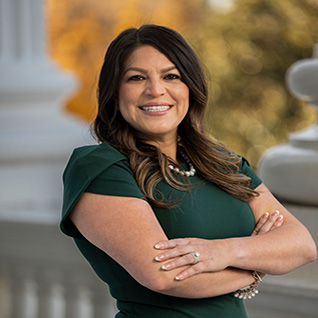The closure of a hospital in Madera County in January was not an isolated incident in California. The economic shockwave of the pandemic continues to reverberate through rural regions and has combined with an inflationary surge in costs and a lagging workforce, creating a new crisis.
It began with a phone call late on a Friday afternoon last July. The California Hospital Association was calling to inform Sen. Anna Caballero’s office in Merced that the Madera Community Hospital was in trouble. Cash reserves had dried up and the hospital was facing bankruptcy. Caballero joined the effort to keep the hospital open as it transitioned to new ownership under Trinity Health. Then the state attorney general’s office set conditions on the sale that Trinity would not accept. The hospital closed two days into 2023.
“It truly was a safety-net facility for Madera County and even surrounding communities,” Sherrie Bakke, a former business development director at the hospital, told the State Board of Food and Agriculture last week.
The county’s 150,000 residents lost their hospital as well as its four rural health clinics. The region was already short of physicians, and patients who rely on government-subsidized care now have even fewer options. NeRarly nine out of 10 patients at the hospital are enrolled in Medicare or Medi-Cal. They now drive to Fresno or Merced to facilities already at capacity and with extended wait times, raising new concerns over health equity and access.
“Madera and the issues that we're seeing in the Central Valley are really the canary in the coal mine that we're seeing throughout California,” said Bryan Bucklew, president and CEO of the Hospital Council of Northern and Central California. “COVID was literally a flood for our hospitals. And now as the water recedes, you see all the devastation that is being left behind.”
 Esmerelda Soria, D-Merced
Esmerelda Soria, D-MercedWhen hospitals canceled elective procedures in 2020, revenues dropped. The federal government covered some of the losses with a $10 billion rescue package. But the losses added up to $22 billion. Since then, many hospitals have relied on cash reserves to maintain operations.
Then inflation soared. Labor costs rose 16%, supplies went up 19% and pharmaceuticals jumped 41% in price, according to Bucklew. All this exacerbated existing long-term issues. The Medi-Cal rates that hospitals receive from the state average just 74 cents per dollar of cost, while Medicare is 75 cents.
More than 400 hospitals—over half the state’s entire share—are losing money and have negative margins, explained Bucklew. Four hospitals have publicly disclosed their challenges: El Centro Regional Medical Center, Watsonville Community Hospital, Hazel Hawkins Memorial Hospital in Hollister, and Kaweah Health Medical Center in Visalia. And Bucklew suspects at least 20 others are in similar circumstances. Most are independent and serve vulnerable communities.
He estimates the state has just six months to prevent a disaster.
The financial hit to hospitals comes as state changes to Medi-Cal will expand coverage to more undocumented farmworkers, adding yet more patient demand in rural agricultural regions.
Caballero and a dozen other senators are requesting $1.5 billion in emergency funding from the state budget to keep the hospitals afloat. Assemblymember Esmerelda Soria, representing the Madera region, has put in a similar request and has filed a measure to establish an emergency loan program for hospitals, with a separate $20 million budget request for the fund. Caballero, meanwhile, has authored Senate Bill 870 to extend a state tax on health insurance plans, which annually generates about $1.5 billion in revenue that supports public services like Medi-Cal.
“We know that we have a state crisis in front of us,” said Soria during a townhall meeting last month on the Madera hospital closure. “It’s predominantly in lower-income, rural communities.”
Don’t miss a beat! It’s easy to sign up for a FREE month of Agri-Pulse news! For the latest on what’s happening in Washington, D.C. and around the country in agriculture, just click here.
Luis Quinonez, chief of staff for Caballero, has been working with the Newsom administration to develop a framework for supporting distressed hospitals. He said SB 870 is a way to drive that conversation forward.
“It feels like we have been here before, with especially rural hospitals,” said CDFA Secretary Karen Ross.
Nationwide, more than 147 rural hospitals since 2010 have succumbed to low patient volume and high fixed costs and subsequently closed, according to Thomas Morris, an associate administrator for the U.S. Department of Health and Human Services who spoke on the issue in a House Appropriations Committee panel last month. Rural hospitals also face workforce shortages. The Health Resources and Services Administration states that rural areas account for 66% of the professional shortage for primary care health.
Bucklew recognized the issue pervades rural America but at the heart of it, “the demographics are working against us.” Fewer people are entering higher education to pursue medical careers, while Californians are living longer and putting more demands on the system.
Caballero is in discussions with the UC Merced chancellor to partner on a health clinic and teaching hospital. But Quinonez cautioned that it would take a lot of work, funding and imagination to sustain such a program for the long term.
If the state does prevent more hospitals from declaring bankruptcy, the deep-rooted cost and workforce issues would take much longer to resolve and could eat away at communities in the meantime. Hospitals offer quality jobs and help sustain local economies, explained Bucklew. People often move to those communities for those health care services, added board member Bryce Lundberg.
“Everyone has to come together and really come up with a solution,” said Bakke. “We know that it's not Madera Community Hospital that's going to solve it on their own.”
For more news, go to Agri-Pulse.com.


